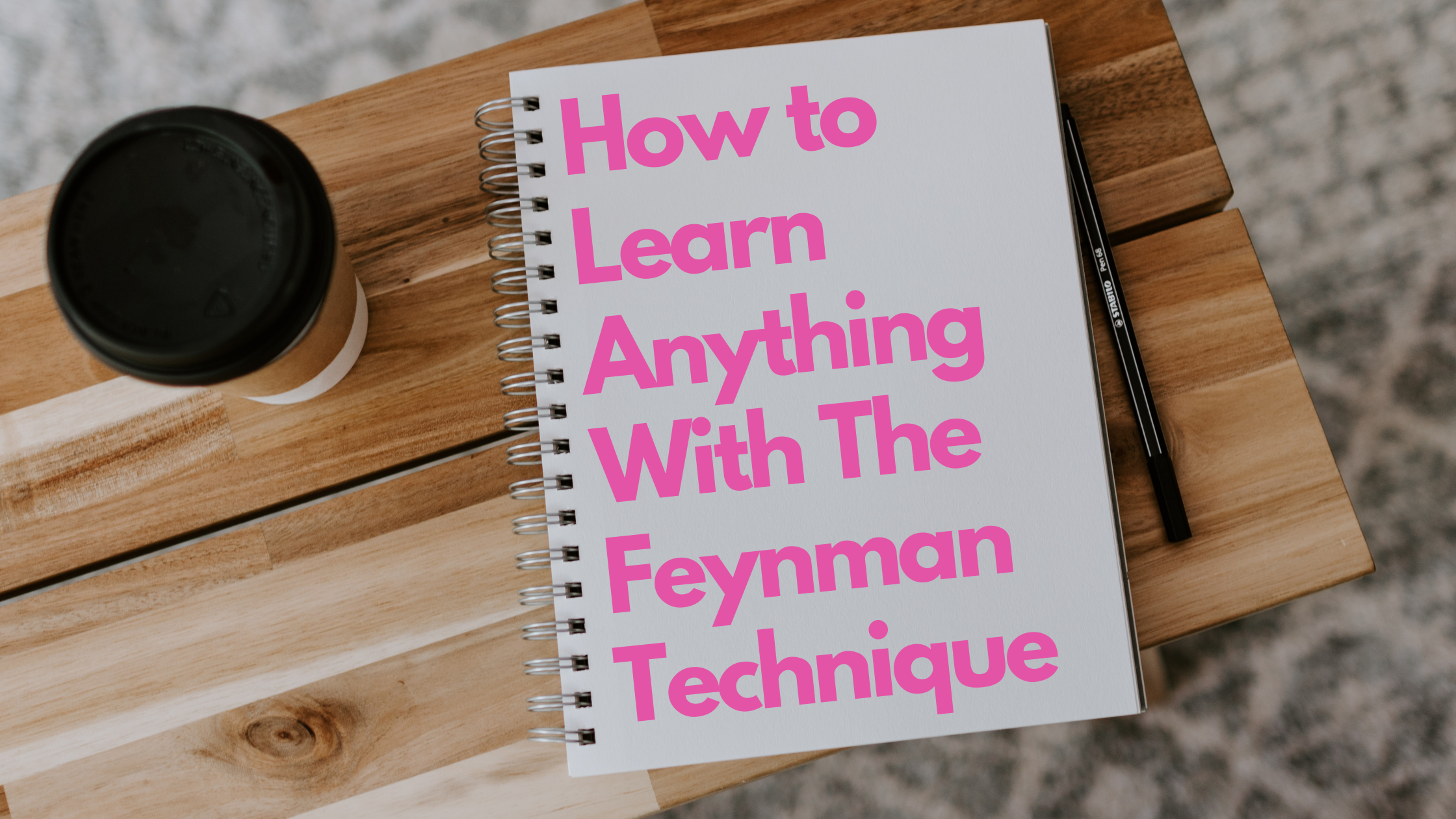How to Learn Anything With The Feynman Technique

We like to think of human memory in a similar way to a computer’s memory. But this is far from the truth. Unlike machines, encoding a memory requires us to work with how our minds evolved to build memories. We can’t just recall everything we hear or see.
The Feynman Technique was created by Richard Feynman, one of the greatest physicists the world has known. His contributions to science and our understanding of the world have won him a Nobel peace prize, helped explain the Challenger disaster, and added to our understanding of light.
There’s a difference between knowing something and knowing the name of something. The Feynman technique is a way to learn something well enough to teach it. There is a simple 4 step process geared towards giving you a deeper understanding of the subject.
1. Teach it to a child
There is a good reason why this is the first step. Too often, we feign an understanding of a subject through complicated and smart-sounding words. It’s easy to sound like you know what you’re talking about even when you don’t.
When you are forced to teach it to a child, you won’t be able to use hard to understand jargon. It requires you to simplify the subject, no matter how complicated, and teach it well enough so that a child could understand it.
In the process, you’ll develop a strong foundation for whatever you are trying to learn. You won’t be able to teach it unless you have a firm grasp of the basics. From there, you’ll gain a deeper understanding of the complicated aspects of what you are learning.
Review the gaps in your knowledge
The Feynman technique tells you to teach your subject to a child because children will continue to ask why, no matter how simple you’ve made the topic. What you’ll notice soon into teaching the subject is that there are many questions you don’t know the answer to.
When you explain something to a child, they’ll rarely understand what you are trying to say right away. Follow me for this example. Those are not rain clouds. Why? Because rain clouds are darker. Why? Because they have more vapor. Why? There was more vapor in the air. Why?
You can see how as this goes on, gaps will appear in your explanation. You’ll find that your mind will gloss over the seemingly simple parts, leaving you with an incomplete understanding of your subject. Once you can answer the endless whys, you should have a much deeper understanding of your subject.
3. Organize and simplify
When you’ve successfully learned your topic well enough to explain it to a child, you would have covered most of your basis in gathering the necessary information. Now, you need to organize and simplify.
A collection of facts isn’t easy to remember. Over time, you’ll find that the facts will begin to slip, and because of this, gaps will start to form in your understanding of the subject. Organizing your information makes remembering more manageable.
When you connect a series of facts in chunks, recalling one fact will lead to recalling others. Start by separating your topic into a simplified outline. Keep the outline short. Adding too many sections will make it harder to remember and organize in a coherent way.
When you organize your outline, begin it with the necessary foundational knowledge. Then, build up to the information that requires an understanding of other topics related to your subject.
4. Revise and tell a story
Learning anything is a lot like exercising a muscle. Memory requires repetition. This is why revision is crucial for building a long-lasting understanding of your topic. It not only helps you repeat the information in your mind, but it also allows you to refine what you already know.
Just like how memory requires repetition, it also requires a story. It’s far easier to remember a story with a thousand details than to remember a series of facts. Crafting a story around your topic and recalling the story will build a natural momentum that leads to the following facts.
Once you revise and craft a story around your topic, you would have successfully built an intimate and long-lasting understanding of what you were trying to learn.

Recent Comments